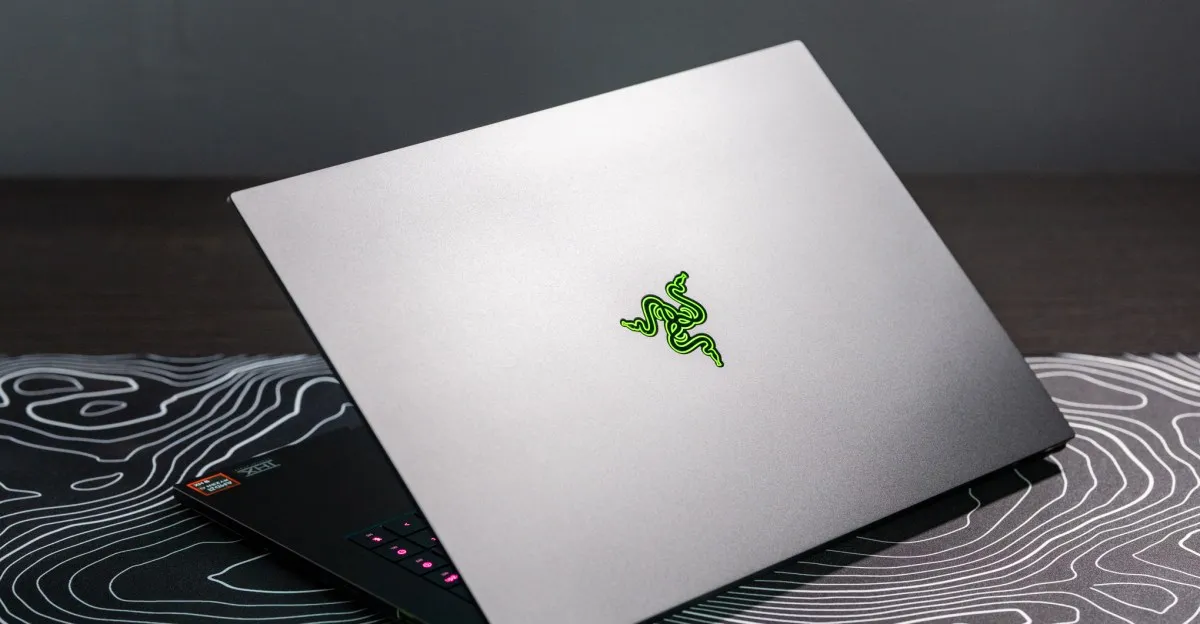
The Razer Blade 16 is designed to be the premier gaming-focused alternative to the MacBook Pro, and I’m excited to delve into its features. As a fan of gaming laptops that maintain a sleek and professional appearance, I appreciate how the new Blade returns to a thinner and lighter chassis design compared to its predecessor, which had become somewhat bulky. The high-end configuration now boasts the cutting-edge Nvidia RTX 5090 laptop GPU, accompanied by a hefty price tag of $4,499.99—$200 more than the previous 4090 model.
After spending some time with the new Razer Blade 16, I encountered some initial challenges. My first review unit exhibited significant hardware issues, leading to a replacement provided by Nvidia, who supplied the Blades for RTX 5090 testing. While the replacement unit has performed better, I've still experienced a few random blue screens. I’m currently in discussions with Razer’s support team to troubleshoot these issues, but in the meantime, I'm committed to testing this laptop thoroughly.
I must say, I adore most of the hardware features on the new Blade. Its stunning 16-inch, 2560 x 1600 OLED display with a 240Hz refresh rate continues to impress, making it a joy for both work and play. The keyboard and trackpad are generally very good, but I do have a notable complaint. The new column of macro keys on the right often leads me to mistakenly mute the microphone instead of hitting the right arrow. This design choice could have been improved by opting for the standard inverted-T arrow key arrangement, which is easier to locate by touch. One has to wonder if Windows laptop manufacturers will ever learn from these design missteps.
The thinner and lighter chassis of the Razer Blade 16 is a welcome update, shaving off a significant 7mm and 0.8 pounds from its predecessor. However, I still need to conduct more thermal testing to determine if it maintains the cooling efficiency of the previous model. Razer also offers a Laptop Cooling Pad that can provide the Blade 16’s GPU and CPU with up to 25W more power each. I have the pad on hand and will evaluate whether the HyperBoost feature justifies the added noise and $150 price tag. Additionally, I ponder whether thicker gaming laptops could extract more performance from the RTX 5090 GPU.
As I've mentioned, the RTX 5090 GPU in the Razer Blade 16 represents a significant upgrade for those who enjoy features like DLSS and frame generation. I will continue to test it, including gaming sessions while on battery power. Nvidia has made bold claims about the power efficiency of its 50-series laptop graphics cards. Early indications suggest that the RTX 5090 is around 20% more efficient than the 4090. However, I remain skeptical, as the Blade 16 struggles to last through a basic workday on battery power, even when using productivity apps like Slack, Chrome, and Google Docs on integrated graphics. In contrast, other gaming laptops equipped with the AMD Ryzen AI 9 HX 370 “Strix Point” CPU can easily surpass eight hours of work on a single charge. Unfortunately, I’ve struggled to achieve even five and a half hours with the Blade, despite enabling Advanced Optimus and meticulously checking graphics settings.
This laptop is marketed as an all-in-one solution for productivity, creative applications, and gaming—yet it comes with a staggering price of $4,499.99. While I am genuinely impressed with its performance under load, I question the justification for such an expense, especially when the device experiences random crashes during light usage and requires frequent recharging. For that price, one could easily invest in a $2,000 MacBook Pro, which adeptly manages creative workflows and can last well over a day (assuming you’re comfortable with macOS). This would still leave you with an additional $2,500 to spend on a solid gaming laptop or even a more powerful desktop setup.
Despite the price tag, the appeal of having a single device that excels in multiple areas is certainly enticing. I find myself continually drawn back to the sleek design of this laptop, which not only looks fantastic but also delivers impressive gaming performance, whether on its vibrant OLED display or an external 4K monitor. Ultimately, I can envision myself loving the Razer Blade 16. However, I will reserve my final judgment until after extensive testing, which I hope will be free from any further technical issues. What are your thoughts? Can any laptop truly justify a nearly $5,000 price tag? Share your opinions in the comments, and let me know if there are specific features or tests you’d like to see in the full review of the Blade 16.